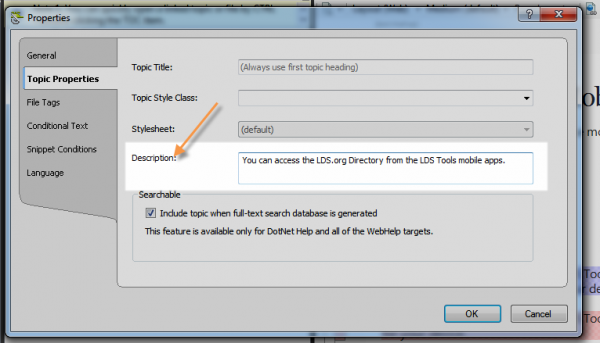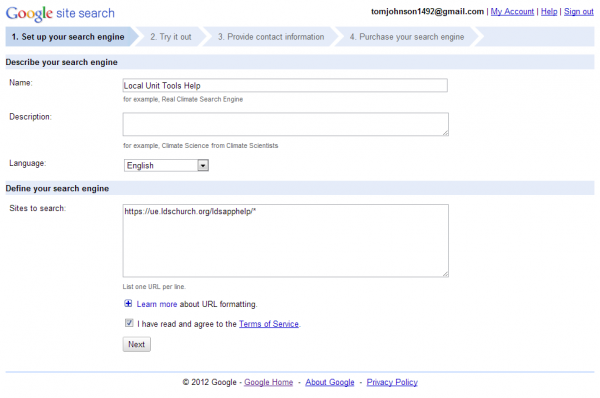7 Ways to Increase Flare's Search Engine Optimization in Google's Results
I've noticed a trend in search results lately. Users are searching for my help products and landing on our technology blog that has articles about the topic rather than landing on the help material for the product.
For example, a user might have an issue with "newsletter," so he or she searches for newsletter and lands on the beta testing announcement for newsletter that I wrote for our technology blog months ago. The help for newsletter doesn't appear in the top results. The user usually scans to the comment field of the blog entry and quickly types a question.
It would be much better if the user found the help material in the search results and looked for the answer there. As a result, I need to increase the search engine optimization of my help material on Google.
The following are 10 techniques for increasing the search engine optimization of content using Madcap Flare.
1. Include a Sitemap in the Target
In Flare, the target settings have a check box that asks whether to generate a sitemap.
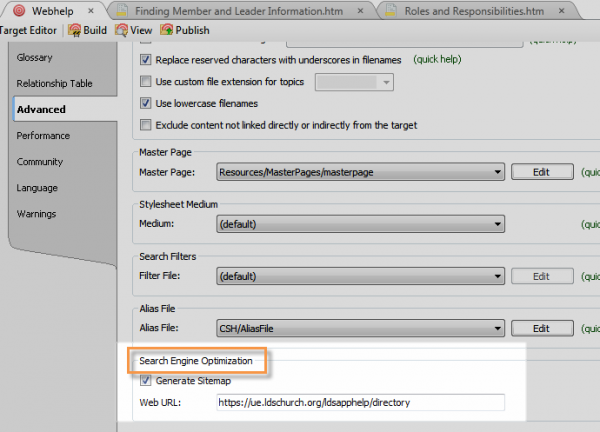
When you select this, the output will include a Sitemap.xml file in the root directory. The sitemap is a file that provides links to all pages on your site that should be indexed by Google.
In Google Webmaster Tools, you can add the site and the sitemap. This helps encourage Google to discover and index all the pages on the site.
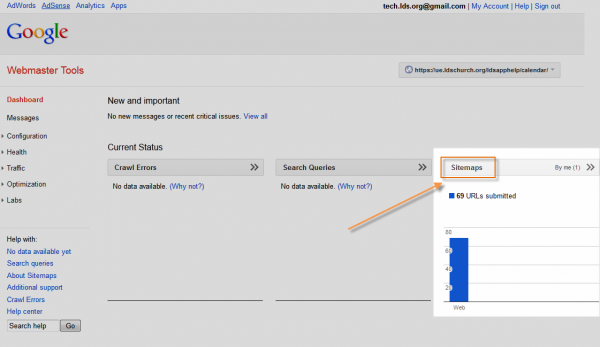
2. Link to the Sitemap on Regularly Indexed Sites
Unfortunately, Google doesn't tell you when they will process the submitted sitemaps. However, if you know Google regularly indexes a site, you can add the links there to more quickly get them indexed. Since I know Google indexes this blog regularly, I'll link to the sitemaps here for these products. Then Google will hopefully follow the links and index all the pages more quickly.
- LDS Calendar help
- LDS Newsletter help
- LDS Directory help
- LDS Lesson Schedules help
- LDS Notes and Journal help
- LDS Gospel Library for Android help
I could also add these sitemap links on our organization's technology blog.
3. Provide Navigation to the Webhelp Frame on Standalone Topics
The sitemap pages that Flare generates list the individual topic pages. However, by default, that individual topic page doesn't have navigation to open the whole webhelp frame. The user sees a disconnected page, like the following image, when landing on the topic:
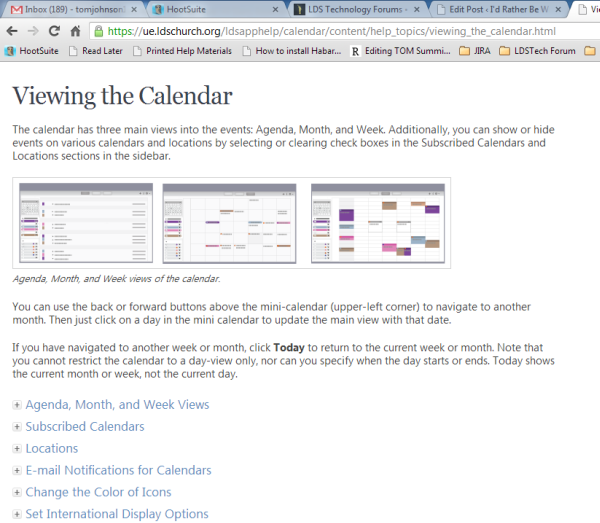
To include the navigation, I need to select the "Show Navigation Link" option in the skin settings.
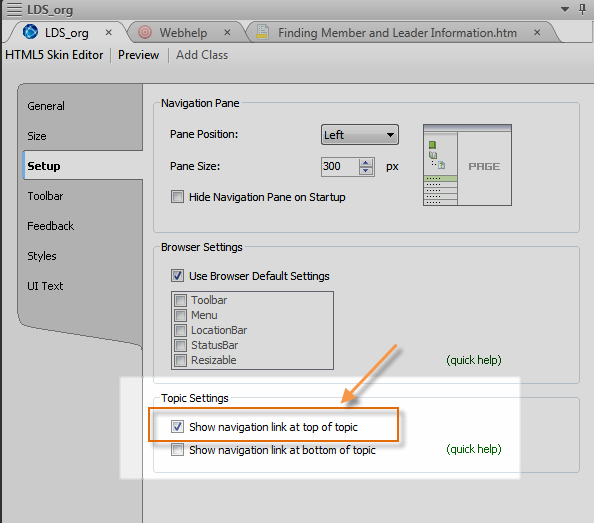
Now users who land on individual topics have a means of getting to the rest of the content. It would be ideal for the topic to load with the frame, but I don't see a way of doing this. My fear is that users may see this disconnected help topic and not recognize it as belonging to a legitimate website.
4. Optimize the Title Tag, Particularly with Your Product Name
One major challenge is figuring out how to keyword-optimize the topics. When I worked on a wiki, since all topics were part of the same site, I had to list the product names in parentheses after the tasks. So "Rights and Roles" became "Rights and Roles (Directory)". This seemed awkward at the time, but in retrospect, search engines probably loved this.
I assume people who search Google for information on rights and roles related to the LDS.org Directory would search for something like "directory lds rights roles." The problem is that inserting the keywords "lds" and "directory" into each help topic title in a webhelp file is awkward.
One easy workaround is to alter the page's title but not the first heading on the page. By page title, I mean the text that appears in the browser tab. Most users don't even glance at this, but the <title> tag on a webpage has a tremendous impact on the SEO.
According to SEOMOZ, "A title tag ... is the single most important on-page SEO element (behind overall content) and appears in three key places: [browser, search results, and external websites]." In a survey SEOMOZ did of SEO thought leaders, "35 of the 37 participants said that keyword usage in the title tag was the most important place to use keywords to achieve high rankings." (Title Tag SEO Best Practices)
In short, the Title tag is an incredibly important SEO element to optimize. It's unfortunate that Flare makes this field so easy to overlook, but I'm glad that it does provide the option to customize it.
To edit the title tag in Flare, edit the file and change the Topic Title field in Topic Properties.
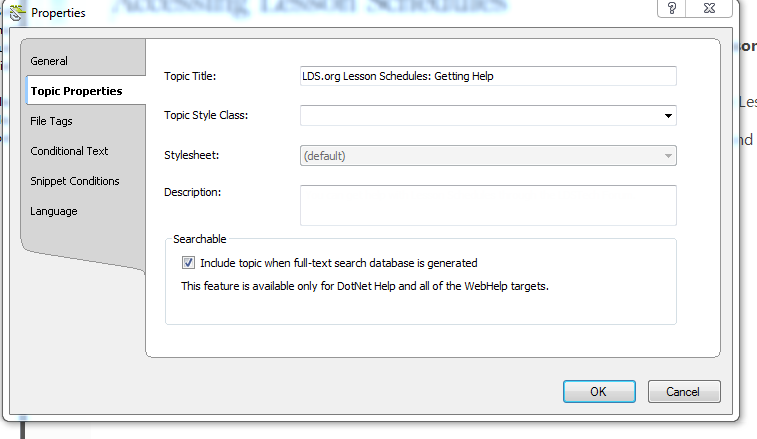
I recommend including the product name first and then the specific page name, such as LDS.org Directory | Rights and Roles.
Unfortunately there's no programmatic way to automatically insert the product name in front of each title tag in Flare. Ideally, I'd like to set the product name to always precede the topic title.
In general, keep title tags to about 70 characters (half a tweet), because that's the display length limit in Google. Put the highest priority keyword first.
5. Leave the Description Field Alone
In both Flare's and Google's list of results, the summary paragraph shows the meta description property. For example, if the topic has this meta description:
<meta name="description" content="You can get help with Lesson Schedules through the LDSTech Forum." />
Then this is what users will see in the search result summaries. You can customize description field in Flare by editing the file's properties.
However, note that these meta description tags don't influence search engine rankings at all. According to SEOMOZ,
Google announced in September of 2009 that neither meta descriptions nor meta keywords factor into Google's ranking algorithms for web search. Google uses meta descriptions to return results when searchers use advanced search operators to match meta tag content, as well as to pull preview snippets on search result pages, but it's important to note that meta descriptions do not to influence Google's ranking algorithms for normal web search.(Meta-Description)
A good summary paragraph can entice a reader to click the result, and so the description can be important. However, SEOMOZ recommends that for longer content, you simply let Google pull the relevant text out of the page that matches the user's keywords:
Although conventional logic would hold that it's universally wiser to write a good meta description, rather than let the engines scrape a given web page, this isn't always the case. Use the general rule that if the page is targeting 1-3 heavily-searched terms/phrases, go with a meta description that hits those users performing that search. However, if the page is targeting longer tail traffic (3+ keywords), for example with hundreds of articles or blog entries or even a huge product catalog, it can sometimes be wiser to let the engines themselves extract the relevant text. The reason is simple - when engines pull, they always display the keywords (and surrounding phrases) that the user searched for. If a webmaster forces a meta description, they can detract from the relevance the engines make naturally. In some cases, they'll overrule the meta description anyway, but it's not always wise to rely on that. (Meta-Description)
My recommendation for the description field would be to leave it alone. Unless users see keywords they searched for, chances are they'll overlook the description field. If you have a lot of content on the page, it's better to let Google pull out these keywords and bold them.
6. Add a Custom Google Site Search
To better understand what users see when they search Google, you can create a custom Google Site Search. This allows you to provide a Google Search box that limits the Google search results to a specific domain only.
You could then run the same queries on Google Site Search as you do in Flare's search and compare the differences. The two search engines have different algorithms. For example, Flare primarily ranks results based on keyword matches. You can even include invisible text in a topic to increase the number of keywords to raise the rank. However, with Google, invisible text is considered black-hat SEO and would put you at risk for search engine penalties. Google's algorithm actually considers backlinks with more weight.
If you find Google's search works much better than Flare's, you could add the Google Site Search into your masterpage. However, note that Google Site Search also includes ads from Google (surprise!), so unless you want to pay to remove them, those ads could confuse readers.
(By the way, in testing Google Site Search, you can also see which help products are already indexed by Google and which aren't.)
7. Link to the Help Files from Other Sites
One way to increase visibility is to link to your help from other sites. Google treats backlinks to a page, especially backlinks from high authority sites, as a huge factor in Pagerank.
For example, I could link to the help from our technology blog, from our home site, and from as many other sites as I can include. These links pointing back to my help files can increase the SEO in Google. A large enterprise with a lot of different sites might really have the advantage here.
Another trick might be to include links to the help files in a forum signature. That way each time you post to a forum thread, your signature will include links to all the help files.
Additionally, if you post a lot in forums and other places, whenever you can, link to the specific help topic as you provide answers to questions.
Other SEO Factors: Include High Value Search Content
In this post, I've mostly covered technical tricks for increasing SEO. But SEO is about more than just technical tips and tricks: it's about content. As such, if you want to increase the SEO of your help content, you need to follow a more strategic approach to including high value content. By including information in the help that people are searching for, the help will have more visibility. (Duh!)
For example, consider the scenario in which users search for a specific error message. If you have included the error message in your help, users will probably find it. It almost goes without saying all the SEO in the world won't do you any good if the content doesn't match what users are searching for.
And what are users searching for? Sarah Maddox posted her top 100 pages in Confluence according to their web metrics. She says "Information about specific, complex topics tops the bill." After that, installation, upgrade, release notes, and getting started information is popular.
Mark Baker notes that decision support information is important to users. Avoid giving too much attention to the obvious, how-to instructions and instead give more weight to the business decisions that users have to make — the why and how for specific situations, not just the 1-2-3 steps in completing a task.
You can also look at your existing metrics to see what topics users are looking at most. Lou Rosenfeld's search analytics session at Brain Traffic highlighted a number of insights you can gain from search. Basically, the hits to pages in your help can give you an idea of what information users want. If a lot of users land on topic X, maybe you should include more information about topic X in your help.
If users are using the keywords abc, but abc doesn't appear in your help, maybe you should rethink the keywords you're using.
If you have a particularly high bounce rate or exit rate from a specific page, look at that page and ask yourself why users are leaving. Are they spending much time on that page?
In short, analyzing your own web metrics can help you fine tune your content to increase the SEO.
Did I miss any SEO tips with Flare? If so, let me know in the comments below.
About Tom Johnson

I'm an API technical writer based in the Seattle area. On this blog, I write about topics related to technical writing and communication — such as software documentation, API documentation, AI, information architecture, content strategy, writing processes, plain language, tech comm careers, and more. Check out my API documentation course if you're looking for more info about documenting APIs. Or see my posts on AI and AI course section for more on the latest in AI and tech comm.
If you're a technical writer and want to keep on top of the latest trends in the tech comm, be sure to subscribe to email updates below. You can also learn more about me or contact me. Finally, note that the opinions I express on my blog are my own points of view, not that of my employer.

